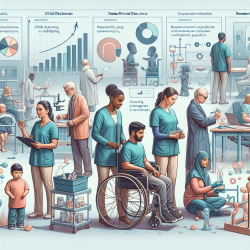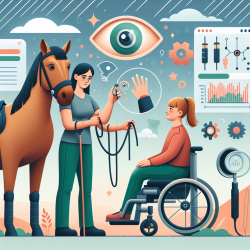Understanding the Intersection of Mobility and HIV Care
In the ever-evolving landscape of healthcare, practitioners must continuously adapt and refine their skills to address emerging challenges effectively. One such challenge is the intersection of mobility and HIV care engagement, particularly in sub-Saharan Africa (SSA). The research article "Mobility and HIV Care Engagement: A Research Agenda" by Thorp et al. provides valuable insights into this complex issue, offering practitioners a data-driven foundation to enhance their practice.
Key Findings from the Research
The study highlights several critical aspects of mobility that impact HIV care outcomes:
- Definitions of Mobility: The research underscores the varied definitions of mobility, ranging from temporary to permanent migration, and how these impact HIV treatment outcomes.
- High-Risk Mobility: Identifying high-risk mobility patterns is crucial for targeted interventions. The study suggests that aspects such as trip duration, frequency, and individual control over travel significantly affect HIV care engagement.
- Vulnerable Populations: The research identifies groups most susceptible to mobility-associated treatment interruptions, including those in extreme poverty and those with limited employment opportunities.
Implementing Research Outcomes
Practitioners can enhance their skills by integrating the research findings into their practice. Here are some actionable steps:
- Adopt Differentiated Service Delivery (DSD) Models: Implementing client-centered DSD models can help accommodate mobile populations by reducing the frequency of facility visits.
- Leverage Technology: Utilize mobile phone interventions and telemedicine to maintain continuity of care for mobile clients.
- Develop Targeted Interventions: Focus on high-risk mobility characteristics and tailor interventions to address the specific needs of vulnerable populations.
Encouraging Further Research
While the study provides a robust foundation, there are still gaps in understanding the mechanisms through which mobility affects HIV outcomes. Practitioners are encouraged to engage in further research to explore:
- What specific aspects of mobility pose the greatest threat to ART retention?
- Which populations experience high-risk mobility and how can interventions be tailored to their needs?
- What innovative strategies can be developed to serve mobile populations effectively?
Conclusion
As mobility continues to rise due to factors like climate change and economic disparities, understanding its impact on HIV care is crucial. Practitioners equipped with data-driven insights can make informed decisions, ultimately improving outcomes for mobile populations and contributing to the broader goal of ending the HIV pandemic.
To read the original research paper, please follow this link: Mobility and HIV care engagement: a research agenda.










